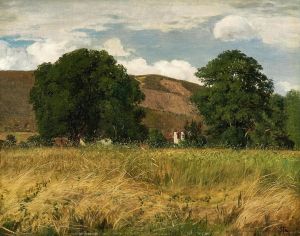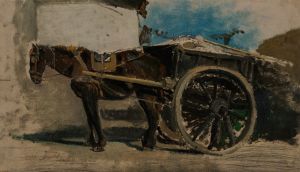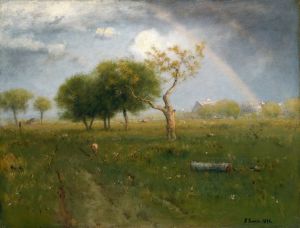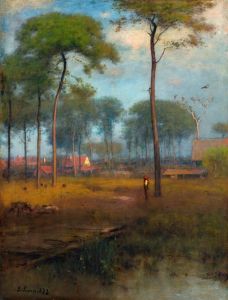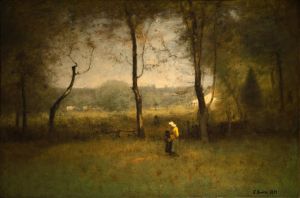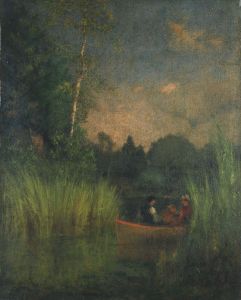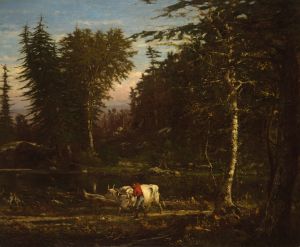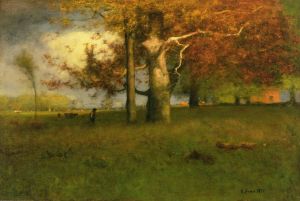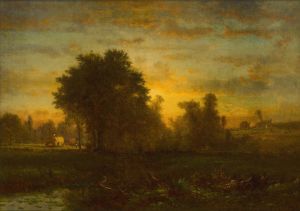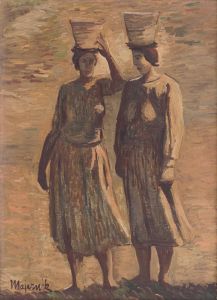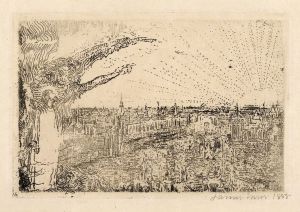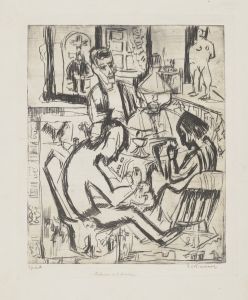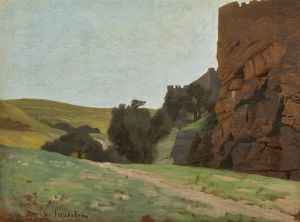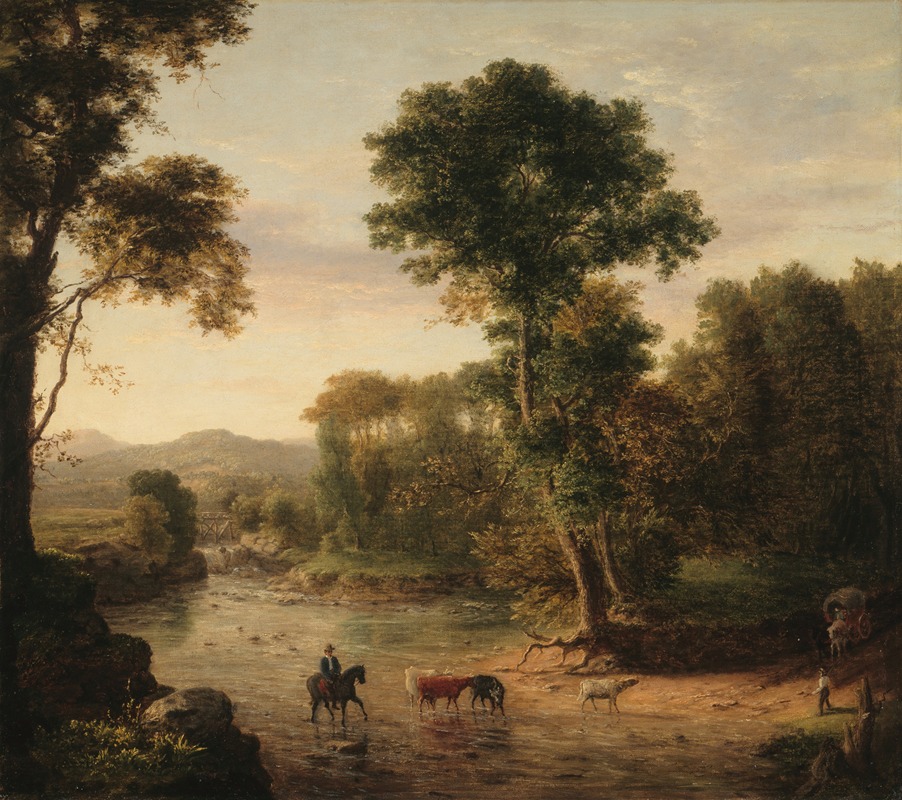
Crossing the Ford
A hand-painted replica of George Inness’s masterpiece Crossing the Ford, meticulously crafted by professional artists to capture the true essence of the original. Each piece is created with museum-quality canvas and rare mineral pigments, carefully painted by experienced artists with delicate brushstrokes and rich, layered colors to perfectly recreate the texture of the original artwork. Unlike machine-printed reproductions, this hand-painted version brings the painting to life, infused with the artist’s emotions and skill in every stroke. Whether for personal collection or home decoration, it instantly elevates the artistic atmosphere of any space.
"Crossing the Ford" is a painting by the American landscape artist George Inness, who is widely regarded as one of the most influential figures in American art. Born in 1825, Inness became known for his ability to blend realism with a more expressive, atmospheric style, often drawing inspiration from the Barbizon School and the works of European masters such as J.M.W. Turner.
Created in 1868, "Crossing the Ford" exemplifies Inness's mature style, which is characterized by a harmonious balance between detailed representation and a more evocative, almost spiritual quality. The painting depicts a serene rural scene where figures and animals are shown crossing a shallow river or stream, known as a ford. This setting is typical of Inness's work, which often features pastoral landscapes that evoke a sense of tranquility and connection with nature.
Inness's approach to landscape painting was deeply influenced by his interest in the philosophical and spiritual ideas of the time, particularly those of Emanuel Swedenborg, a Swedish theologian and mystic. Inness believed that art should convey the spiritual essence of nature, and this belief is evident in "Crossing the Ford." The painting's soft, diffused light and gentle color palette create an ethereal atmosphere, inviting viewers to experience the scene not just visually, but emotionally and spiritually.
The composition of "Crossing the Ford" is carefully structured to guide the viewer's eye across the canvas. The use of light and shadow, along with the placement of figures and animals, creates a sense of movement and continuity. Inness's skillful use of color further enhances the mood of the painting, with warm earth tones and cool blues working together to create a harmonious and balanced image.
"Crossing the Ford" reflects Inness's belief in the interconnectedness of all elements within a landscape. The painting does not merely depict a specific location or moment in time; rather, it captures the essence of a universal experience, one that resonates with viewers on a deeper level. This ability to transcend the literal and evoke the spiritual is a hallmark of Inness's work and contributes to his enduring legacy in American art.
Throughout his career, Inness produced numerous landscapes that explored similar themes and techniques, solidifying his reputation as a master of the genre. His work has been celebrated for its innovative approach to capturing the beauty and mystery of the natural world, and "Crossing the Ford" remains a significant example of his artistic vision.
Today, George Inness is remembered as a pioneer of American landscape painting, and his works continue to be studied and admired for their unique blend of realism and spirituality. "Crossing the Ford" stands as a testament to Inness's ability to convey the profound connection between humanity and nature, a theme that remains relevant and inspiring to audiences around the world.





